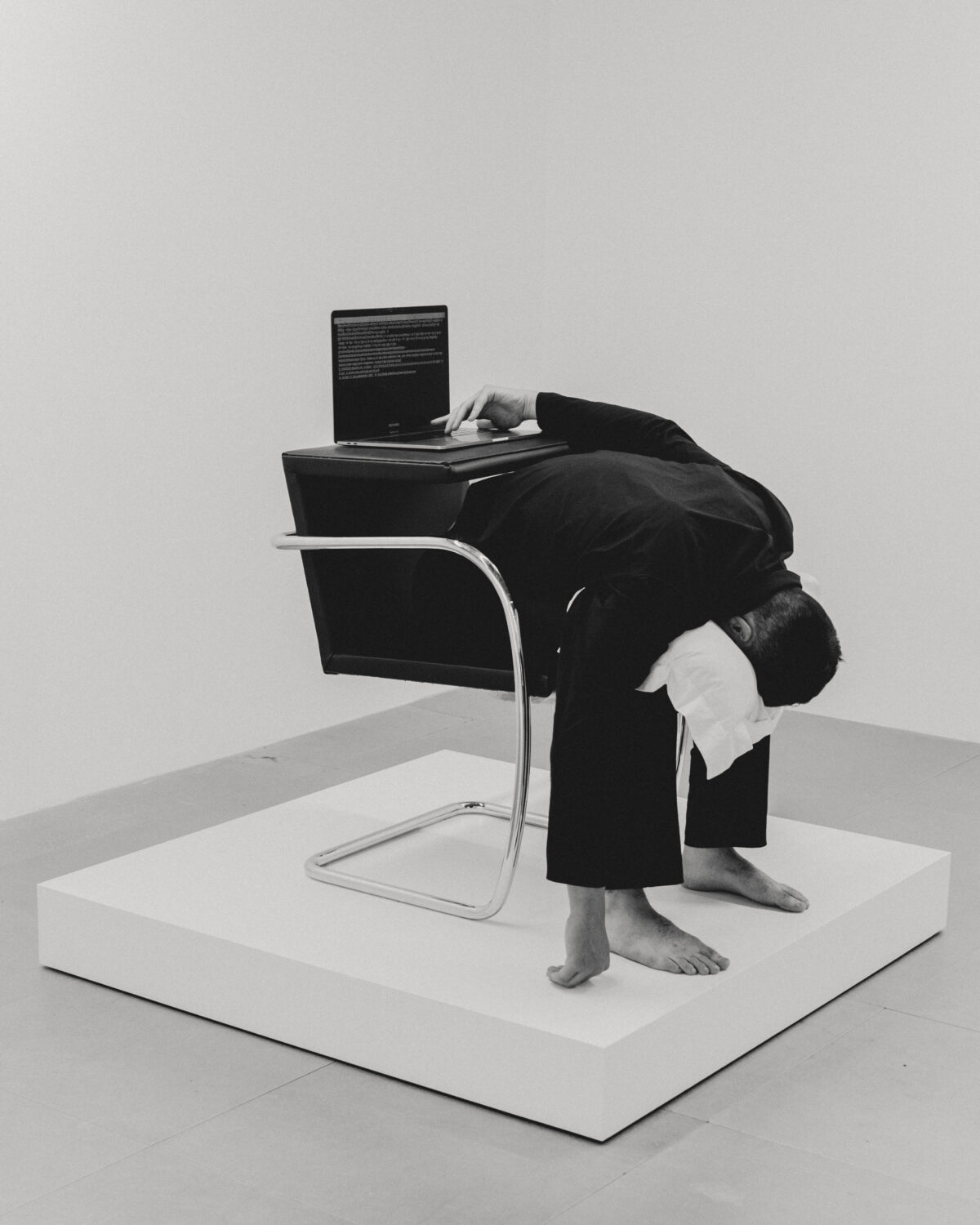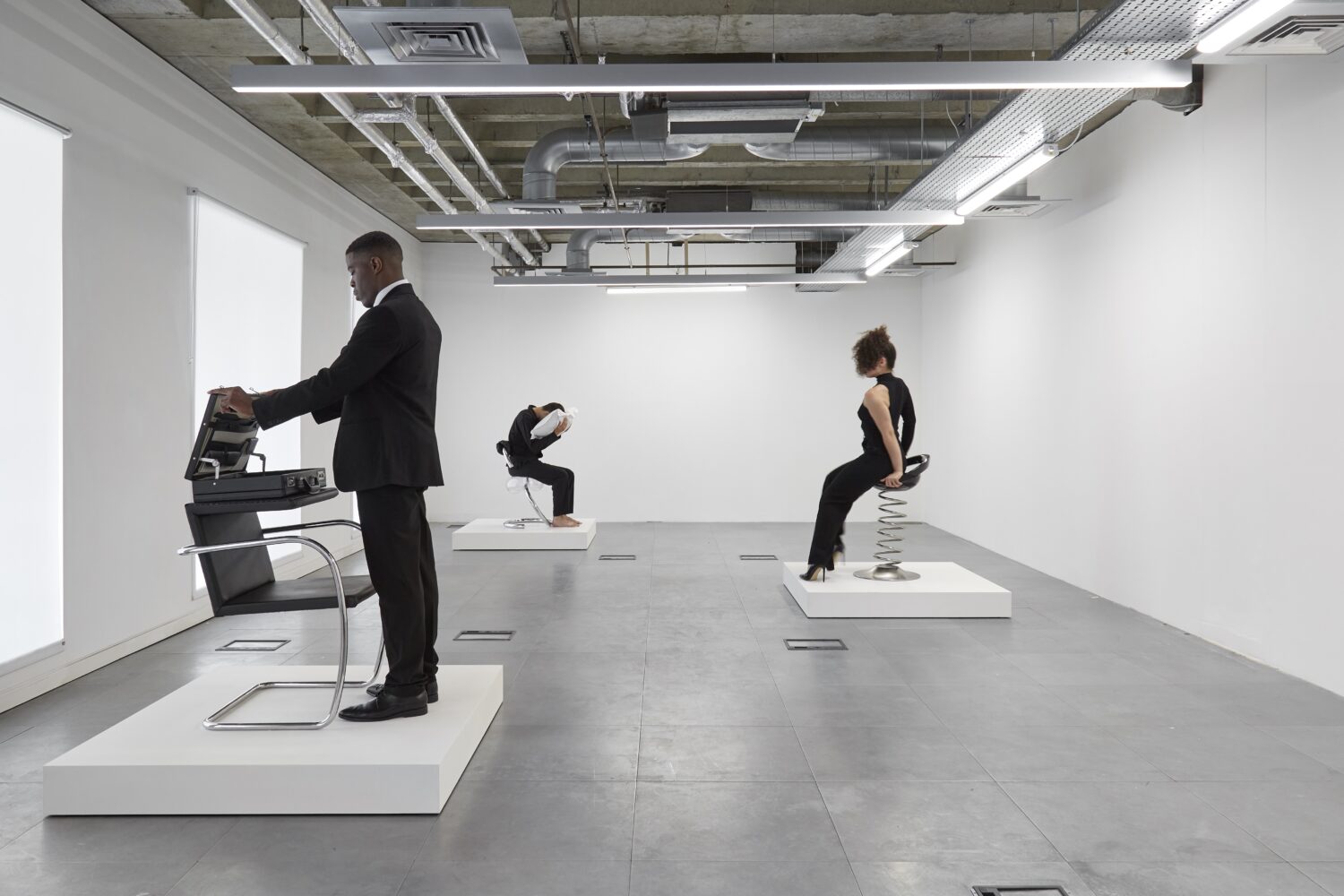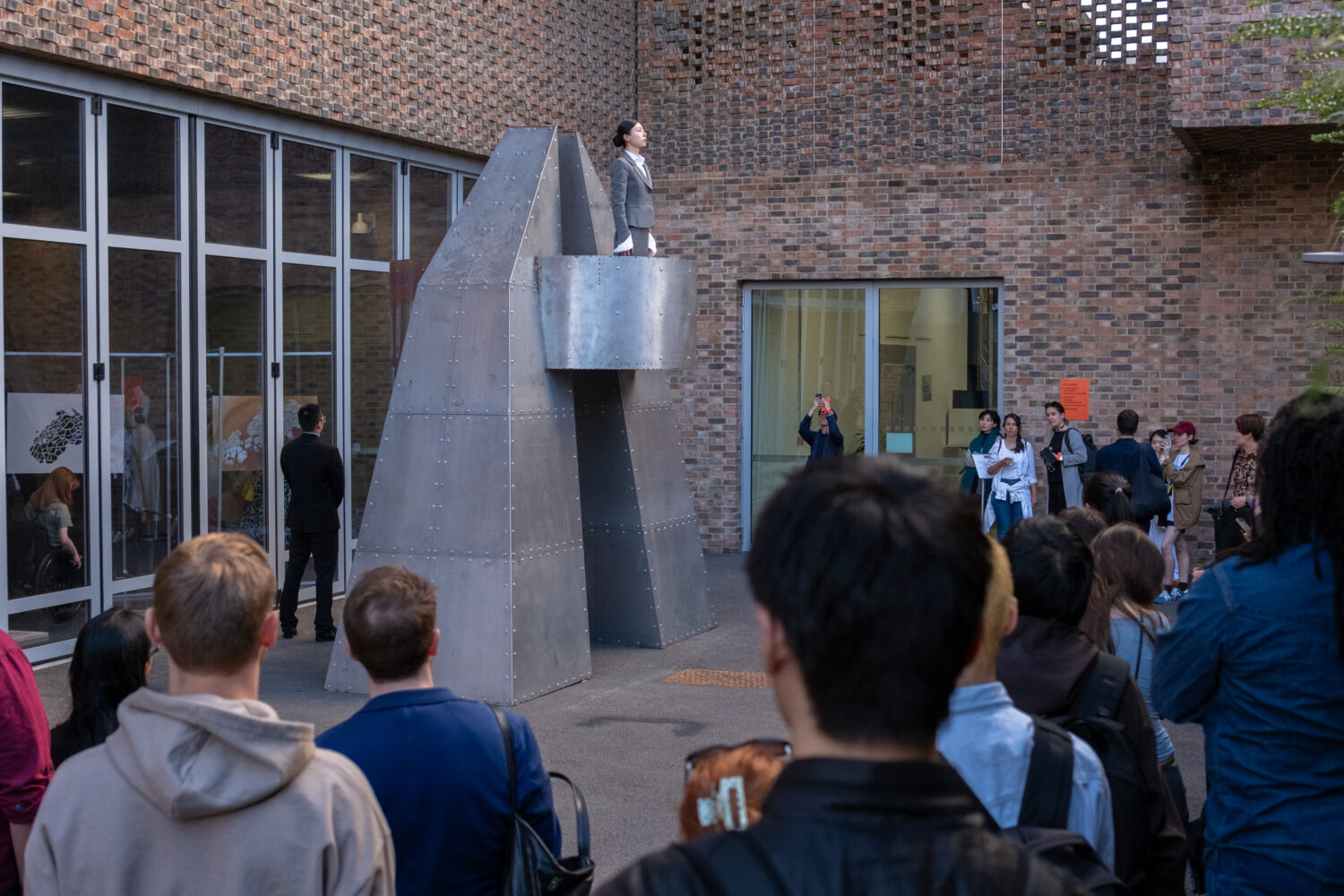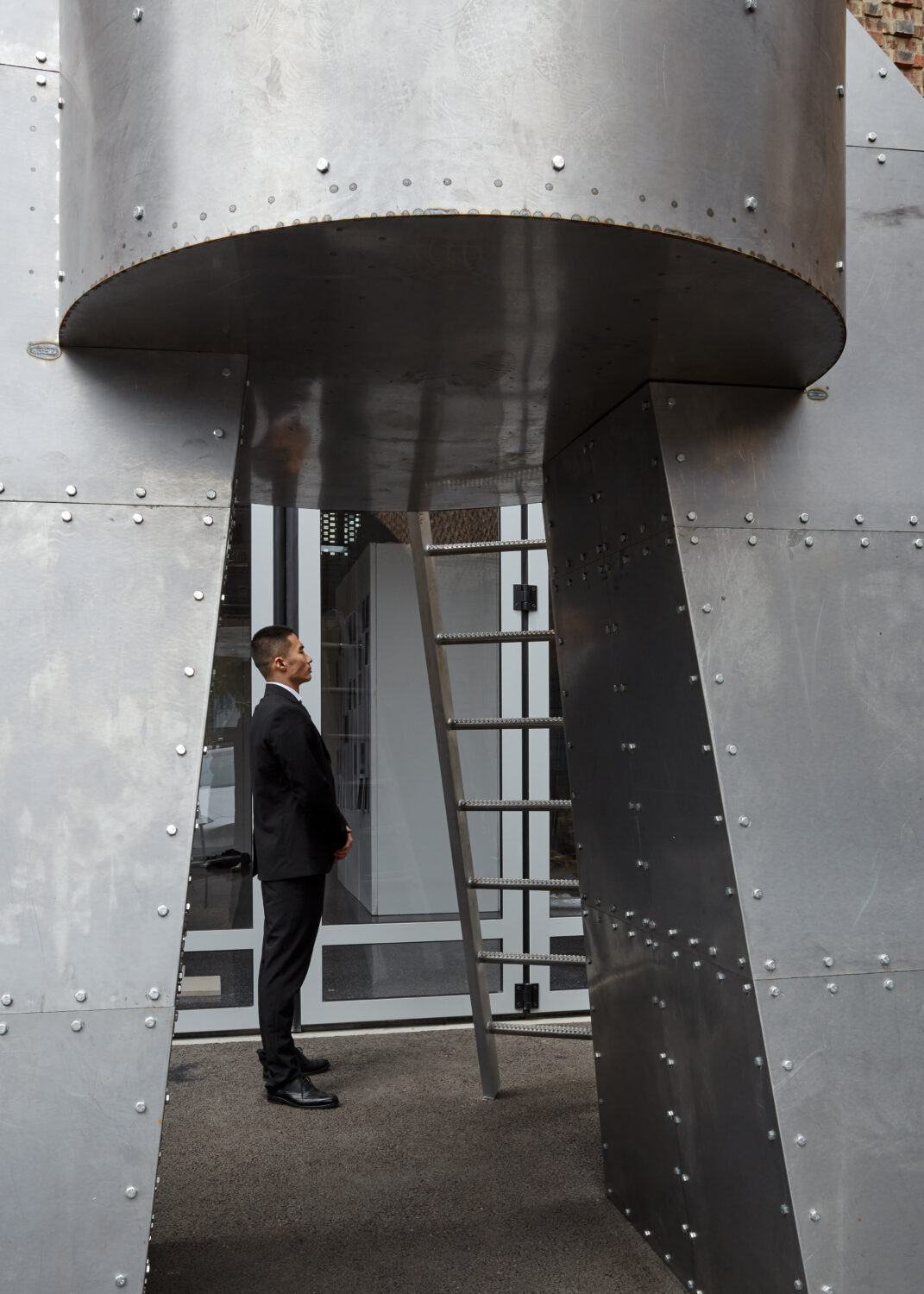Why Hongxi Li Is Making Us Feel Uncomfortable
By Anna MossGoing from strength to strength, Xiamen-born, London-based visual artist Hongxi Li is set to open her third solo show at east London’s Neven Gallery on 26 September 2024.
Li’s practice is characterised by astute social commentary, sitting at the intersection of art and design. In her second solo show, SHAPED, curated by Martin Mayorga and Vanessa Murrell at V.O Curations, Li’s main subject was a ubiquitous piece of furniture: the chair, rather literally used as a springboard for exploring the afflictions of daily life. Repurposing classic chair designs such as the Modernist ‘Brno’ chair designed by Mies van Der Rohe in the late 1920s, or a crescent bar stool from the 2000s, Li’s sculptures defied their intended functions. The chairs contort the human figure, have deflating air cushions or uncontrollable steel springs, doing everything but providing comfort and rest.

Culminating in the video installation Metropolitan Rhythm, the sculptures were activated by three performers and the video accompanied by an audio soundscape of field recordings by Magnus Brandt. Each performer took turns assigned to a chair, dryly named after markers of the daily routine: At Work, At Bar, At Home. These sculptural assemblages gave “going through the motions” a whole new meaning — the performers’ movements, exaggerated and involuntary, brought the works to life, imbuing them with emotion and vitality. The artist’s chair series showed her willingness to play with, even usurp, iconic designs, loading them with new associations. The streamlined tendency of modern and contemporary design feels important to the artist’s practice, a visual manifestation of the veneer that permeates our social or work environments.

Li’s 2023 performance, YES, YES, YES, directly addressed themes of obedience within hierarchical structures. It characterised the silent and repetitive style which now typifies the artist’s performances, and importantly introduced a recurring character, played by none other than herself. Jolene is the artist’s corporate, East Asian female persona, dressed in a grey and conservative uniform with slicked-back hair to match. In YES, YES, YES, she is sat at an almost cartoonishly-cracked desk with an emergency button. Whilst the occupants of Li’s chair sculptures were passive in their discomfort, Jolene scrambles for the hard-to-reach emergency button in a tense few moments of the performance. The button calls for a miniature ambulance: a morbidly funny metaphor for the senselessness of the system of which she is a part and its lack of salvation.

Unendurable, the humdrum drone of corporate routine crescendos into a piercing scream: even if it is that of a children’s toy. YES YES YES contained the same surrealistic temperament of Li’s previous work, but undoubtedly pushed it further in its personal and technical execution. Inspired after attending a workshop with tutor Whisky Chow, the artist committed to trying her hand at performance. Stepping into Jolene’s stilettos signalled the integration of Li’s practice in all its forms. It is clear that the artist is driven by concept, rather than medium, naturally leading to a multidisciplinary practice. Through a seemingly ever-expanding repertoire of manipulated objects, she subtly portrays feelings of dissatisfaction, disempowerment and isolation: the persona of Jolene, too, is as much a kind of live medium or object, evolving in real-time, representing the nature of and oppression enacted.
This year, Li graduated from London’s Royal College of Art with a Master’s degree in sculpture. Throughout the course, I was able to get an insight into more of her working process: cardboard mock-ups of Jolene’s cracked desk and her final project, QUANTA and mood-boards of Constructivist buildings and sharp tailoring pinned to her studio wall. Though the first time I see it is as a miniature, low-fidelity version in cardboard, QUANTA’s final iteration is an outdoor sculpture of epic proportions, made of carbon steel, four metres tall and weighing nearly a ton. QUANTA grounds her central themes of power and control in a wider, more ambitious context, this time encompassing architecture, rather than objects of furniture: a sure sign that the course had facilitated Li’s ability to re-define the limits of the medium in which she works.

An amalgamation of a monument, gateway and stage, QUANTA took inspiration from Soviet Second World War monuments, such as Yugoslav Spomeniks, but does not allude to any single building or culture. I admire Hongxi’s research, and most of all her ability to dive into any and every field of knowledge, much like a method actor preparing for a role, learning as much from choreographers as she does from the heavy lifting logistics involved in QUANTA. Nevertheless, she points out that her practice is not fundamentally research oriented, “It’s more about the individual within society, something that everyone can relate to.”
The core of her practice lies within a cross-cultural emotional discomfort in contemporary life, which is characterised by uniformity. Jolene represents any and every salary worker, though her struggle in YES YES YES was inspired by a traumatic incident the artist experienced within the Chinese education system. In contrast with QUANTA’s monumental scale, Li refrains from making grandiose and particular socio-political statements. Like so many great artists, she holds up a mirror to her viewers, imploring them to deal with less than comfortable feelings.

It’s twenty-five degrees in June when I stand in the courtyard of the Royal College of Art, faced with the immense QUANTA sculpture. The heat is stifling. I can feel the sun on my head and rays reflect onto the steel bolted panels. I hear an industrial clank as the ladder is attached to the structure, and Jolene climbs up. For a minute all I can see are her heels. Today, the warm weather adds an additional layer of absurdity to the performance. With its imposing, hostile architecture, I imagine myself in snow-covered Leningrad. For twenty minutes, Jolene stands on the viewing platform gazing out as the audience forms a circle down below.
I’m reminded that this performance is silent and static: that we’re allowed and encouraged to talk amongst ourselves, even look at our phones. In stark contrast to the artist’s previous performances, sometimes almost misconstrued as slapstick, QUANTA shows Li’s understanding of what can be said with resolute silence. Jolene’s gestures are so controlled, you hardly notice them. Like the sun, I try not to look directly at her face for the full duration, but like the sun, it’s impossible not to feel her full force, the sense of Jolene’s alienation.
Feature image: Hongxi Li, QUANTA, 2024. Photo: Corey Bartle Sanderson